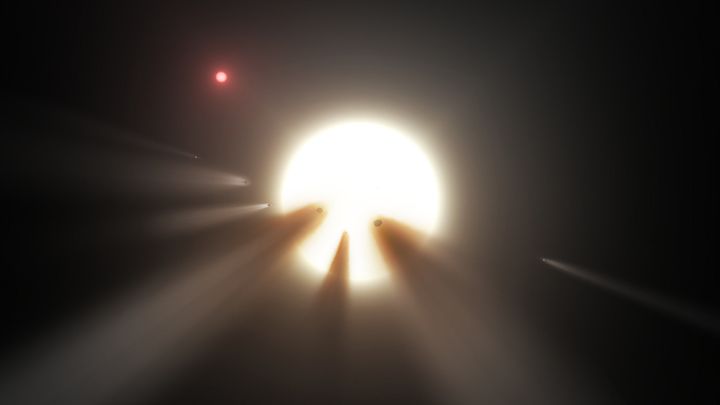Named by some as the ‘most mysterious star in the universe’, KIC 8462852 or Tabby’s Star has been keeping astronomers and the public hooked thanks to the theory that the star could be home to an alien megastructure.
This theory stems from the unique way in which the star suddenly dims and then brightens again. While many have tried to fathom why this is, we have until now been struggling to say with some certainty why it’s happening.
Theories have ranged from it being simply a huge asteroid field to the most interesting of all which suggests it could be a vast alien-made structure.

Thanks to a Kickstarter project which raised over $100,000, researchers were able to pay for the Las Cumbres Observatory to spend many months closely examining the star’s behaviour.
Well now a team involving over 100 researchers, led by LSU Department of Physics & Astronomy Assistant Professor Tabetha Boyajian, feel they finally have enough data to solve the mystery of Tabby’s Star.
“Dust is most likely the reason why the star’s light appears to dim and brighten.” explains Boyajian. “The new data shows that different colors of light are being blocked at different intensities. Therefore, whatever is passing between us and the star is not opaque, as would be expected from a planet or alien megastructure,”
Of course while it might not be the answer we were all secretly rooting for, the method with which we got our answer shows a fascinating change in the way we make new discoveries in space.

It was citizen scientists known as ‘Planet Hunters’ who were the ones to first detect the star’s mysterious behaviour.
“If it wasn’t for people with an unbiased look on our universe, this unusual star would have been overlooked,” Boyajian said. “Again, without the public support for this dedicated observing run, we would not have this large amount of data.”
Then, thanks to the Kickstarter campaign it was again the public that were able to fund the time the telescope needed to look at the star.
“We’re gathering so much data on a single target. This project is reflective of changes in astronomy with the access to this flood of data,” said Tyler Ellis from Spokane, Washington, an LSU doctoral candidate studying this star.
